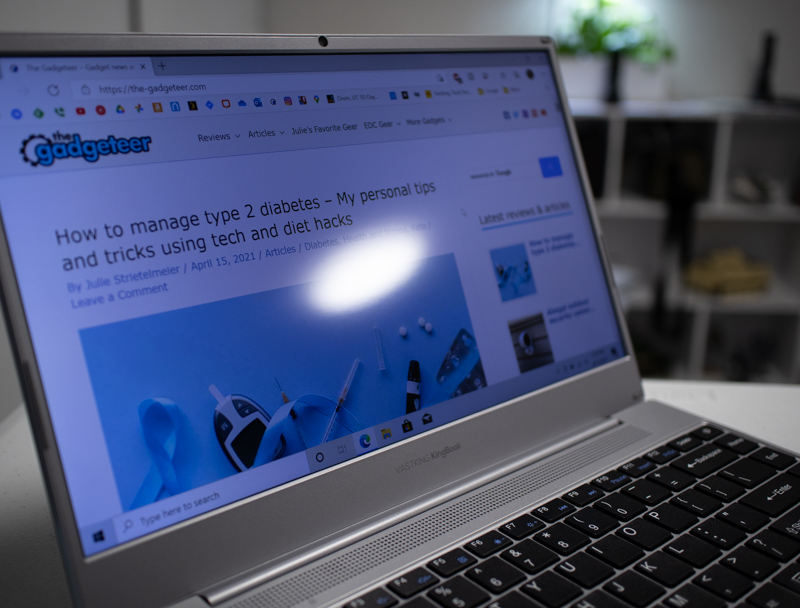
REVIEW – This review was an interesting challenge. I was expecting the Vastking K100 Windows laptop to fall short of my expectations based on the spec-sheet, but it surprised me in both good and bad ways. If you’re looking for an entry level laptop that is “good enough”, this might tick the boxes for you, but you should be aware of some potential flaws. Overall, I was able to both work and browse on the Vastking K100 Windows laptop without much difficulty and if it were a bit cheaper would definitely recommend it as a budget option. At the launch price, there are many other similar laptops in the market that might be better picks, depending on your needs.
What is it?
The Vastking K100 Windows laptop is an entry-level laptop running Windows S mode out of the box. It’s equipped with about everything you’d need for remote work or school, as long as they only require a web browser or apps that can be installed from the Microsoft store.
What’s in the box?
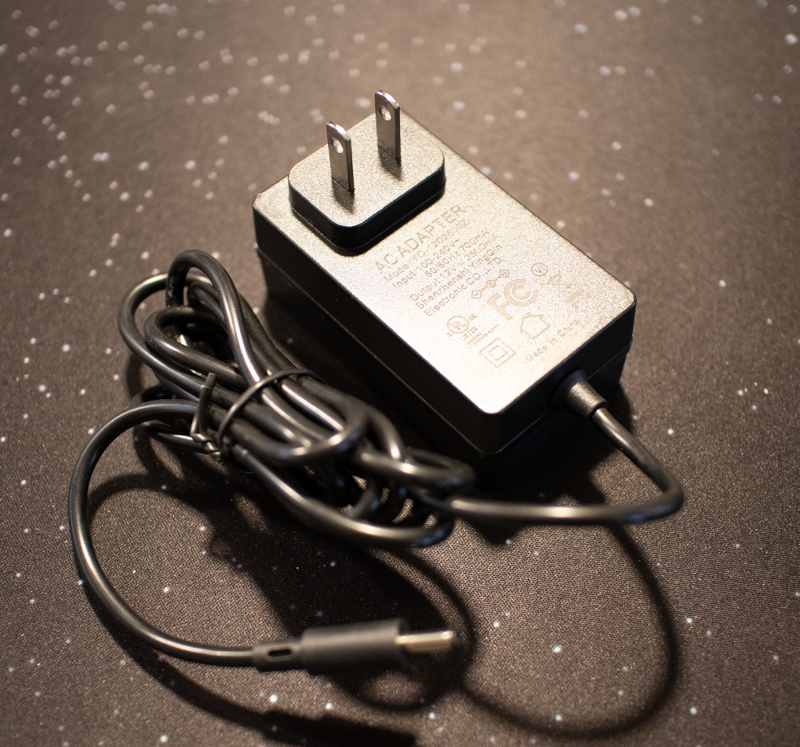
Included in the box is the Vastking K100 Windows laptop, the AC power adaptor shown above, and a quick guide pamphlet.
Hardware specs
- Intel Celeron N4020 Dual-Core processor @ 1.0 Ghz (Boosts to 2.8 Ghz)
- Intel UHD 600 GPU (shared memory)
- 8 GB of RAM
- 256 GB SSD
- Micro-SD port
- Windows 10 S mode
- FHD IPS screen (1920 x 1080 resolution, 6-bit color)
- 82% screen ratio, 6mm narrow bezel, 220 nits brightness, 72% NTSC color
- 5000 mAh battery
- “Dual speakers”
- HD camera
- 5 ghz/2.4 ghz WiFi and Bluetooth 4.0
- Dual-purpose touchpad/numpad
Design and features
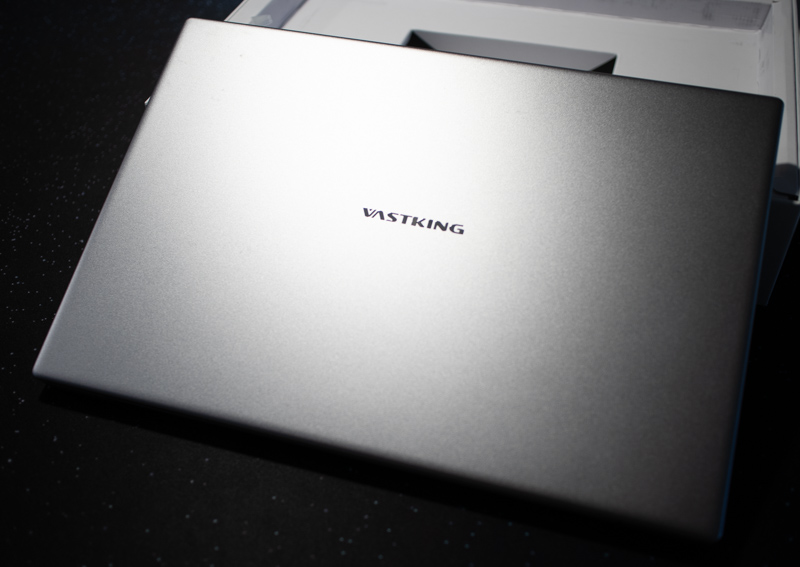
The Vastking K100 Windows laptop is fairly compact for a 14 inch laptop with a nice metallic lid (some aluminum alloy it would seem). A brushed-metal silver finish with their logo is seen from the top. The size and weight are pretty good for a 14 inch laptop, it’s thinner and lighter than my partner’s 14-inch Asus gaming laptop, but there are options on the market that are thinner and lighter (though most seem a lot more expensive).
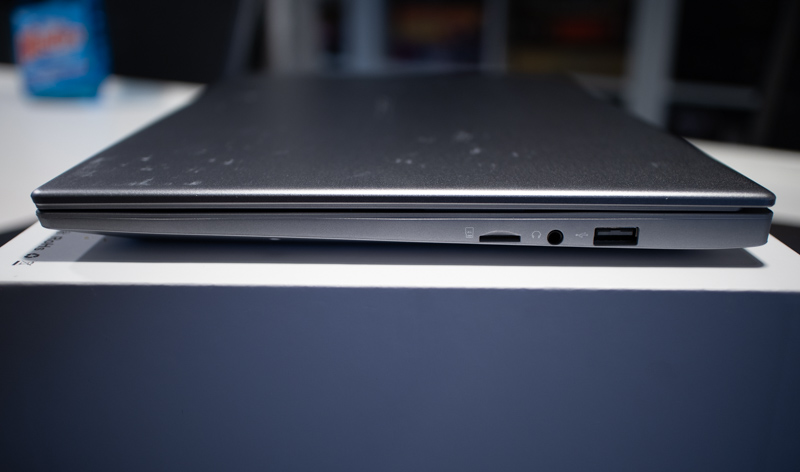
On the right side, we have a micro-SD card slot (inserted cards are flush with the body and don’t stick out, so you could use this for cheap hard drive expansion space if needed), headphone jack, and a USB 2.0 port. The smudges on the lid visible in the photo above were there when I opened the box, I’m not sure if that will be typical of all units or if this was because this was an engineering sample. They easily cleaned off, but when paying hundreds of dollars for a laptop you’d rather not have to clean it immediately upon opening the box.
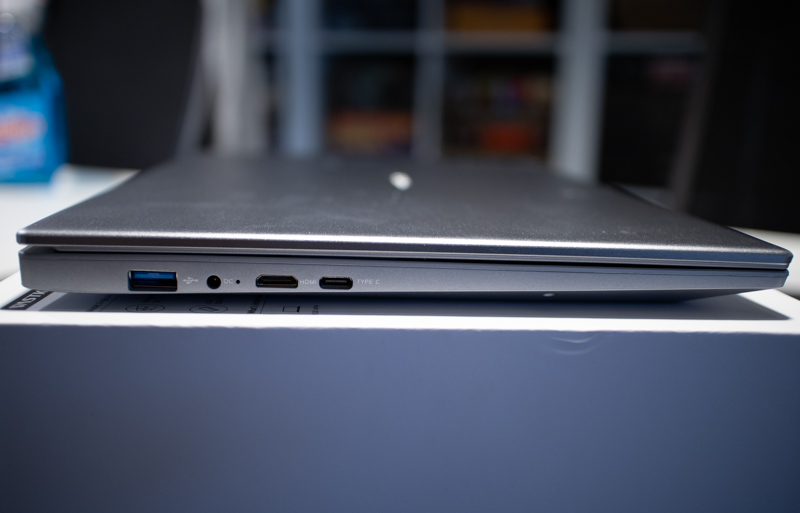
On the left side, there is a USB 3.0 type-A port, DC power input with a small LED light to indicate charging status, HDMI video out, and USB 3.0 type C. This type-C port did not support charging the unit, which was disappointing. I have type C Power Delivery chargers all over the house since my main work and play laptops both support it so it would have been nice here. In fact, with the low power needs of the Vastking K100 Windows laptop’s innards, it would have been great to be the main power source and just remove the DC input entirely.
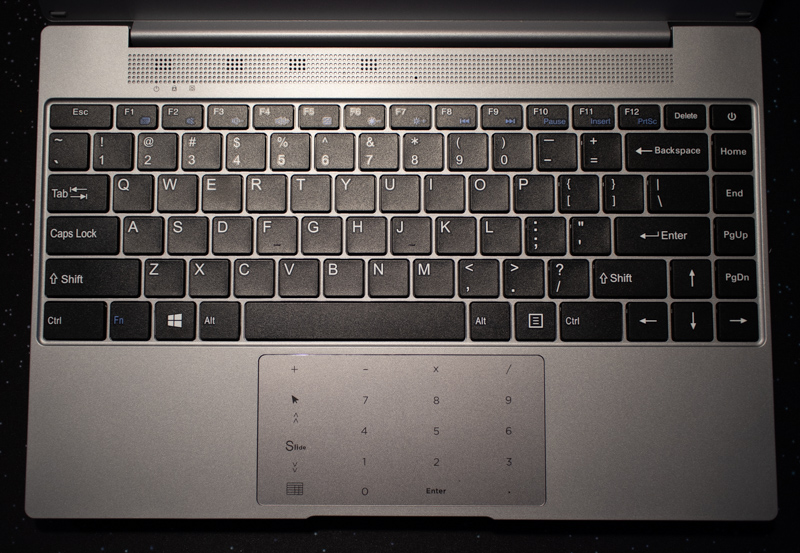
The keyboard layout is pretty standard for this size of laptop, and the touchpad is a good size for this chassis. I didn’t notice the strange cutouts in the grill at the top when I first unboxed the device, we’ll see if those have any impact later. On the bottom are some nice rubber feet/bars to prevent sliding on hard surfaces.
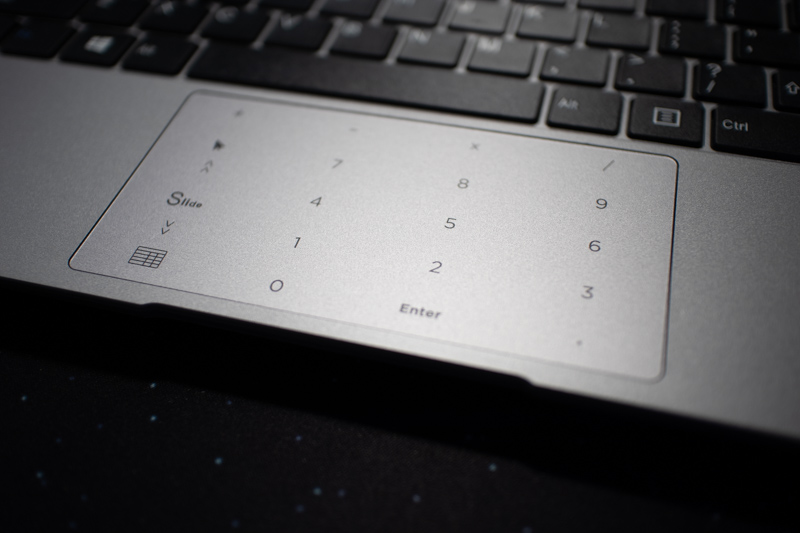
The touchpad is pretty good, I had no complaints with general use. It tracked as well as any other Windows laptop I’ve used recently (though none can quite match Apple’s touchpad mastery). It also has a 10-key number pad printed onto the touchpad itself which is invoked by placing your finger on the “Slide” text and sliding down (and Slide-up to switch back to normal trackpad). The num-pad function worked fine and I never accidentally entered number-pad mode. For someone who was taught 10-key typing in school (thank you 90’s education), it wasn’t nearly as fast as a physical 10-key, but it’s better than not having it for the occasional number entry.
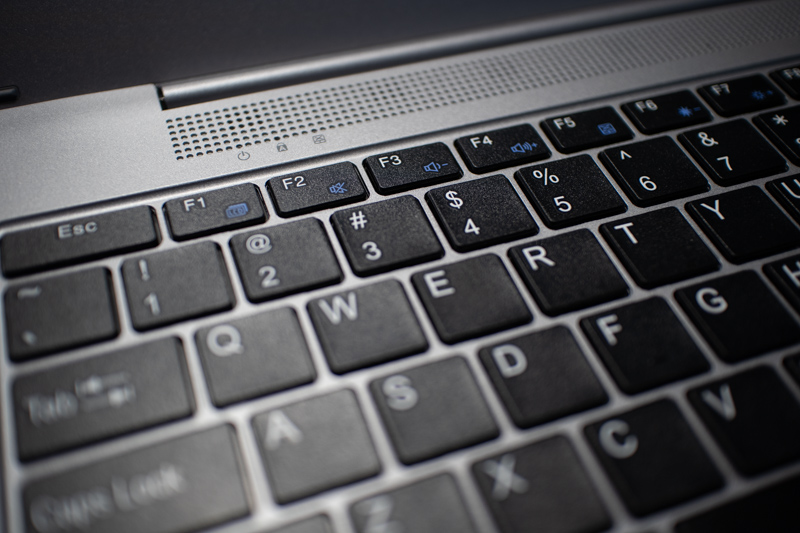
The keyboard was a fairly standard flat-key affair, with fairly low key travel. I was able to easily acclimate and type at my usual speeds (80+ wpm) without any issues. They have a nice tactile bump when typing and don’t wiggle too much. Overall I was pleased with the keyboard (though this is a very subjective realm).
Installation and setup
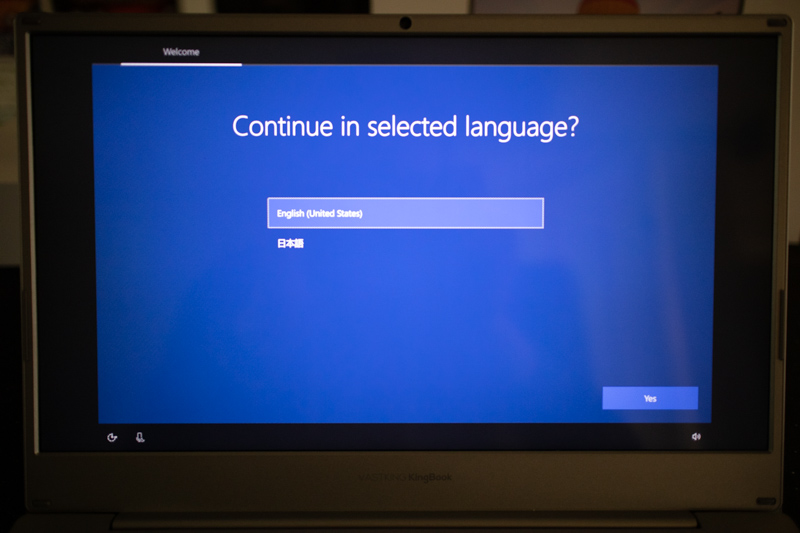
Setup was similar to any other Windows computer, except for the choice between English and Chinese. After this step, all was pretty straightforward and easy. I was expecting a very slow handicapped machine with the Celeron 2-core processor and no hyperthreading. My daily driver is a gaming laptop with an AMD 8 core/16-thread beast, but web browsing and light computer use I was surprised by how snappy this machine was. I used netbooks and have bought and built many Windows PCs over the years, and often the budget/netbook category has been painfully slow for me. I get irritated at long load times for programs or bootup, and frustrated with any lag or freezing. However, the Intel Celeron N4020 Dual-Core processor would boost to 2.8 ghz and I had to purposely overload it to observe any of the above mentioned gripes. Even more impressive is that this is done in a fanless chassis, there’s none of your typical laptop fan whine or noise. I couldn’t hear any coil-whine either (many laptops emit a high-pitched “whine”, especially under load).
I hadn’t used Windows-S yet, but have bought and used Windows applications through the Microsoft Windows App store previously. Windows S is common in these cheaper portable devices both for savings to the manufacturer as well as for better battery life and performance (forcing people to only use approved applications can prevent power-hungry or un-optimized apps to burn through the battery faster). For light office work or educational use, this might work fine – but it completely depends on if the applications you need are available on the Microsoft Windows App store. If they’re not, you’ll need to purchase an upgrade to Windows Home or Pro, so factor that into your decision process, and if buying for a student you’ll want to make sure no applications are required that can’t be used on Windows-S.
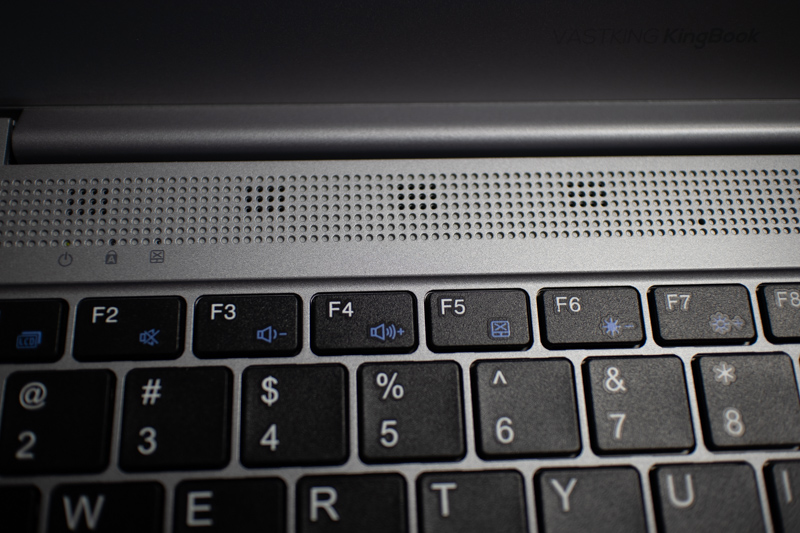
I started testing by playing some videos, and though the volume and sound quality were fine I thought they had only installed a single speaker. This is the moment when I looked more closely at the speaker grill cutouts and realized they were only on the left side. I wasn’t sure if they’d forgotten to drill the holes for the right speaker, or if there was only a single mono speaker, so of course, I opened the unit up.
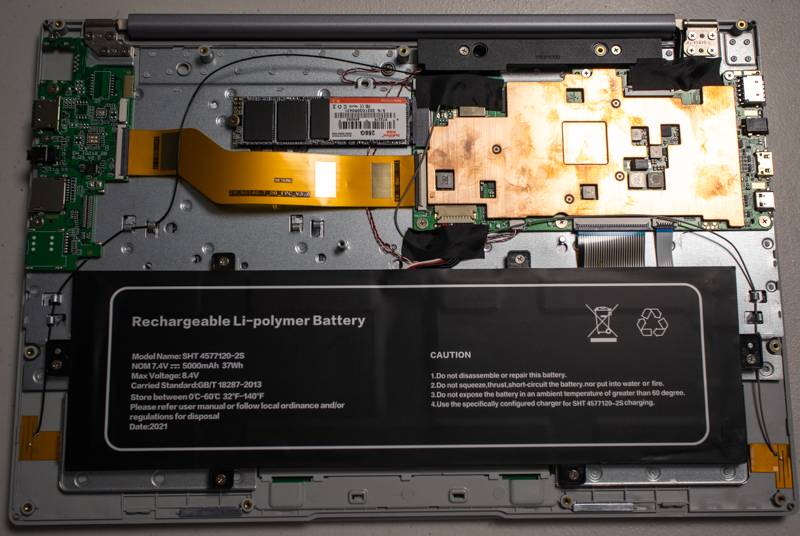
Inside you can see the large copper passive cooling solution (this does a great job of keeping temps down even when the CPU is maxed out for long periods of time). The motherboard itself could almost fit in a large phone or small tablet. There’s an M.2 hard drive that could be removed and replace if desired (and clocks in over 500 MB/s read/write speeds) which is definitely contributing to the quick loading times. Many cheaper devices from China use eMMC storage still, which can be sluggish.
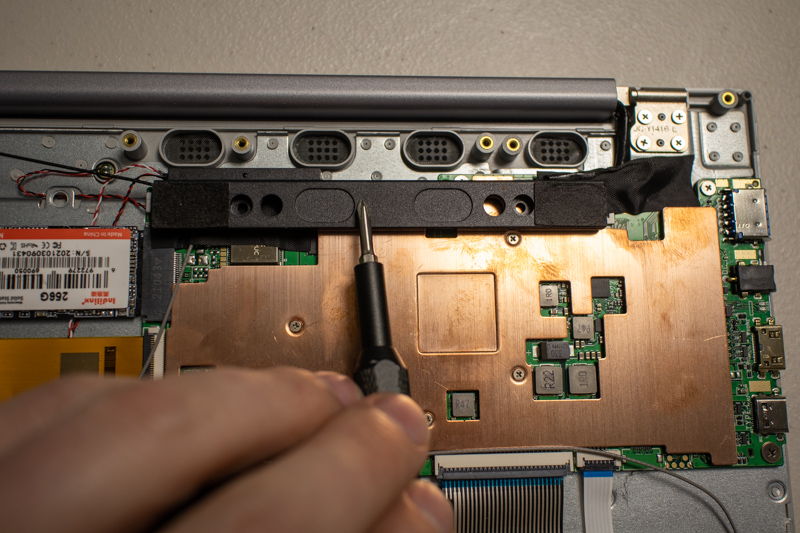
The speaker unit turned out to actually be a stereo speaker unit, as noted on the spec sheet, but the two speakers are only a few inches apart, and are installed on one side, so the result sounds like a mono speaker. I can’t fathom why they would not separate the two speakers (besides cost savings by re-using a speaker part they were already using for one of their tablets?). If they’d installed the speaker bar in the middle of the unit, I might not have ever noticed it. This was definitely the worst part of the whole experience, it really made any entertainment watching less than ideal for me.
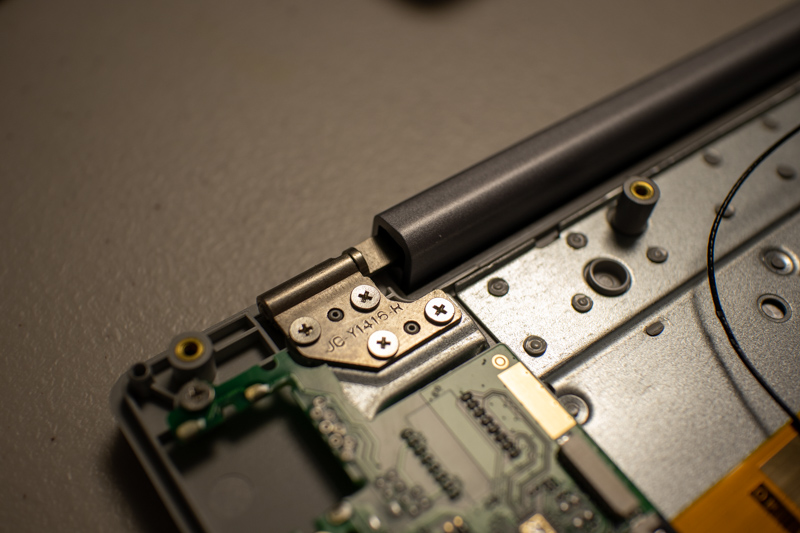
While I had the unit open I also checked out the hinges (a common point of failure in laptops of every price category). This implementation seems to be good to me, the motion was fluid and the parts seemed sturdy and built to last, with no wiggle or looseness. The hinges only open up slightly past 90 degrees (maybe 110/120 degrees? I can’t find my compass). This is fine on most surfaces, but I much prefer laptops that open up farther (up to 180 degrees is fantastic for use on couches).
As you can see in the video above, the screen is mediocre. It shows up as a 6-bit panel, 1920 x 1080 pixels resolution, and on the spec sheet is 200 nits. So, the colors are not great, the resolution is fine, and I was constantly hitting the button to make the screen brighter and finding out I was already at maximum. It’s not the worst display I’ve used, but it’s definitely not winning any awards.
What I like
- Completely silent – no fans
- Decent battery life
- Decent performance for the internals
- It’s “good enough” for most light use
What I’d change
- Speaker placement (2 stereo speakers placed on one side of the laptop defeats the purpose)
- I wish it had USB-C charging, proprietary DC plug is strange
- Dim screen
Final thoughts
If the Vastking K100 Windows laptop was under $400, I would probably be recommending it to friends and family who just need a basic entry-level laptop for web browsing. At the launch price of $429, I could find many alternatives without Windows S and some of the compromises that Vastking has made on this machine. Another major competition in this price range is Chromebooks which also have limitations on which apps work with them (though many have excellent hardware these days and are great if you are just web browsing and/or needed apps are on the app store). I did like the completely silent experience, I’ve gotten used to whirring fans around me all day from my work and play laptops.
Price: $429
Where to buy: Vastking
Source: The sample for this review was provided by Vastking


